Related Research Articles

Gregor Johann Mendel was a meteorologist, mathematician, biologist, Augustinian friar and abbot of St. Thomas' Abbey in Brno, Margraviate of Moravia. Mendel was born in a German-speaking family in the Silesian part of the Austrian Empire and gained posthumous recognition as the founder of the modern science of genetics. Though farmers had known for millennia that crossbreeding of animals and plants could favor certain desirable traits, Mendel's pea plant experiments conducted between 1856 and 1863 established many of the rules of heredity, now referred to as the laws of Mendelian inheritance.

The modern synthesis was the early 20th-century synthesis reconciling Charles Darwin's theory of evolution and Gregor Mendel's ideas on heredity in a joint mathematical framework. Julian Huxley coined the term in his 1942 book, Evolution: The Modern Synthesis.

The Punnett square is a square diagram that is used to predict the genotypes of a particular cross or breeding experiment. It is named after Reginald C. Punnett, who devised the approach in 1905. The diagram is used by biologists to determine the probability of an offspring having a particular genotype. The Punnett square is a tabular summary of possible combinations of maternal alleles with paternal alleles. These tables can be used to examine the genotypical outcome probabilities of the offspring of a single trait (allele), or when crossing multiple traits from the parents. The Punnett square is a visual representation of Mendelian inheritance. It is important to understand the terms "heterozygous", "homozygous", "double heterozygote", "dominant allele" and "recessive allele" when using the Punnett square method. For multiple traits, using the "forked-line method" is typically much easier than the Punnett square. Phenotypes may be predicted with at least better-than-chance accuracy using a Punnett square, but the phenotype that may appear in the presence of a given genotype can in some instances be influenced by many other factors, as when polygenic inheritance and/or epigenetics are at work.

William Bateson was an English biologist who was the first person to use the term genetics to describe the study of heredity, and the chief populariser of the ideas of Gregor Mendel following their rediscovery in 1900 by Hugo de Vries and Carl Correns. His 1894 book Materials for the Study of Variation was one of the earliest formulations of the new approach to genetics.

Reginald Crundall Punnett FRS was a British geneticist who co-founded, with William Bateson, the Journal of Genetics in 1910. Punnett is probably best remembered today as the creator of the Punnett square, a tool still used by biologists to predict the probability of possible genotypes of offspring. His Mendelism (1905) is sometimes said to have been the first textbook on genetics; it was probably the first popular science book to introduce genetics to the public.

Nettie Maria Stevens was an American geneticist who discovered sex chromosomes. In 1905, soon after the rediscovery of Mendel's paper on genetics in 1900, she observed that male mealworms produced two kinds of sperm, one with a large chromosome and one with a small chromosome. When the sperm with the large chromosome fertilized eggs, they produced female offspring, and when the sperm with the small chromosome fertilized eggs, they produced male offspring. The pair of sex chromosomes that she studied later became known as the X and Y chromosomes.
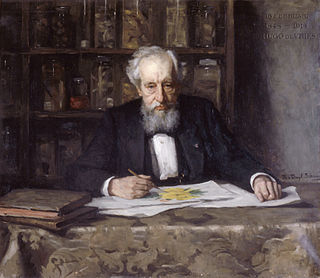
Mutationism is one of several alternatives to evolution by natural selection that have existed both before and after the publication of Charles Darwin's 1859 book On the Origin of Species. In the theory, mutation was the source of novelty, creating new forms and new species, potentially instantaneously, in sudden jumps. This was envisaged as driving evolution, which was thought to be limited by the supply of mutations.

The history of genetics dates from the classical era with contributions by Pythagoras, Hippocrates, Aristotle, Epicurus, and others. Modern genetics began with the work of the Augustinian friar Gregor Johann Mendel. His work on pea plants, published in 1866, established the theory of Mendelian inheritance.
Emma Nora Barlow, Lady Barlow, was a British botanist and geneticist. The granddaughter of the British naturalist Charles Darwin, Barlow began her academic career studying botany at Cambridge under Frederick Blackman, and continued her studies in the new field of genetics under William Bateson from 1904 to 1906. Her primary research focus when working with Bateson was the phenomenon of herostylism within the primrose family. In later life she was one of the first Darwinian scholars, and founder of the Darwin Industry of scholarly research into her grandfather's life and discoveries. She lived to 103.
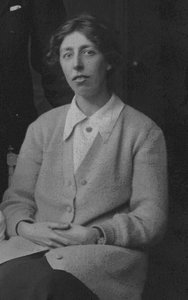
Muriel Wheldale Onslow was a British biochemist, born in Birmingham, England. She studied the inheritance of flower colour in the common snapdragon Antirrhinum and the biochemistry of anthocyanin pigment molecules. She attended the King Edward VI High School in Birmingham and then matriculated at Newnham College, Cambridge in 1900. At Cambridge she majored in botany. Onslow later worked within Bateson's genetic group and then Frederick Gowland Hopkins biochemical group in Cambridge, providing her with expertise in biochemical genetics for investigating the inheritance and biosynthesis of petal colour in Antirrhinum. She was one of the first women appointed as a lecturer at Cambridge, after moving to the Biochemistry department.

Helen Redfield, was an American geneticist. Redfield graduated from Rice University in 1920, followed by earning her Ph.D. in zoology from the University of California, Berkeley in 1921. While at Rice, she worked in the mathematics department. She joined the faculty of Stanford University in 1925 and that same year she became a National Research Fellow at Columbia University. In 1926 she married Jack Schultz, the couple would have two children. Redfield retained her maiden name upon her marriage. In 1929 she worked as a teaching fellow at New York University. Ten years later she worked as a geneticist in the Kirchoff Laboratory at the California Institute of Technology. Starting in 1942, during World War II, she worked as a lab scientist at Cold Spring Harbor Laboratory during the summer. From 1951 until 1961 she served as a research associate at the Institute for Cancer Research.
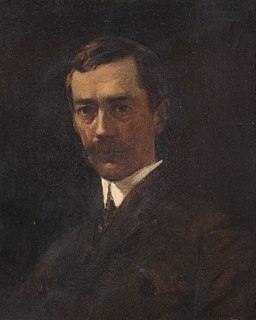
Leonard Doncaster was an English geneticist and a lecturer on zoology at both Birmingham University and the University of Liverpool whose research work was largely based on insects.

Florence Margaret Durham was a British geneticist at Cambridge in the early 1900s and an advocate of the theory of Mendelian inheritance, at a time when it was still controversial. She was part of an informal school of genetics at Cambridge led by her brother-in-law William Bateson. Her work on the heredity of coat colours in mice and canaries helped to support and extend Mendel's law of heredity. It is also one of the first examples of epistasis.
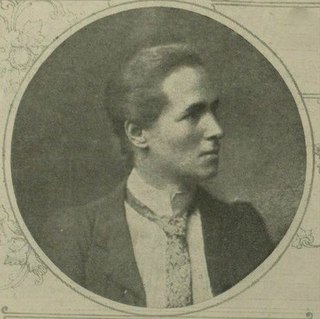
Edith Rebecca Saunders was a British geneticist and plant anatomist. Described by J. B. S. Haldane as the "Mother of British Plant Genetics", she played an active role in the re-discovery of Mendel's laws of heredity, the understanding of trait inheritance in plants, and was the first collaborator of the geneticist William Bateson. She also developed extensive work on flower anatomy, particularly focusing on the gynoecia, the female reproductive organs of flowers.
Igerna Brünhilda Johnson Sollas (1877–1965), also known as Hilda Sollas, was a British zoologist, palaeontologist and geologist, and lecturer at Newnham College, Cambridge. She was one of the first women to be taught geology at the University of Cambrdge. She had wide interests, studying marine organisms, genetics, and palaeontology, and collaborated with Cambridge geneticist William Bateson. An alumna of Alexandra College, Dublin, she was recognized as a role model for women in higher education in Ireland and England.
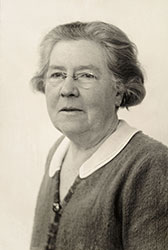
Dorothy Mary Cayley (1874-1955) was a mycologist who discovered in 1927 that "Tulip breaking" is due to a virus.

Caroline Pellew was a British geneticist who made significant contributions to knowledge of the laws of inheritance in various organisms including peas.
Dorothea De Winton (1891–1982) was a plant scientist and one of the first female geneticists. She worked at the John Innes Horticultural Institution for over 20 years.
Aslaug Sverdrup Sømme was a Norwegian plant scientist and geneticist.
Alice Elizabeth Gairdner (1873–1954) was a British plant scientist, geneticist and cytologist.
References
- ↑ Richmond, Marsha L. (November 2007). "Opportunities for women in early genetics". Nature Reviews Genetics. 8 (11): 897–902. doi:10.1038/nrg2200. ISSN 1471-0064. PMID 17893692. S2CID 21992183.
- ↑ Richmond, Marsha L. (September 2006). "The 'Domestication' of Heredity: The Familial Organization of Geneticists at Cambridge University, 1895–1910". Journal of the History of Biology. 39 (3): 565–605. doi:10.1007/s10739-004-5431-7. ISSN 0022-5010. S2CID 84924910.